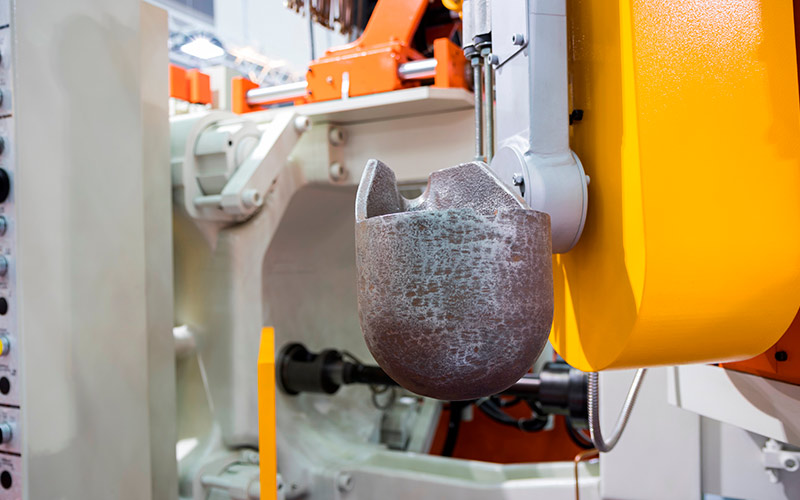
FAIST Light Metals specialises in high pressure die casting (HPDC) technology for the production of aluminium components. Here we are going to explain how this process works and its features.
So, casting means forcing molten metal under high pressure into reusable metal dies. It is often described as the quickest route between raw material and finished product. The finished product also called “die casting” is an accurately dimensioned, sharply defined, smooth or textured-surface metal part.
The process has a number of phases:
- the production of a steel mould able to produce tens of thousands of castings in a few seconds, which is divided into at least two sections to allow the removal of the castings.
- Mounting of the two sections onto a specific machine where one will be stationary (fixed die half) while the other is moveable (injector die half). They are then clamped tightly together.
- Injection of molten aluminium into the die cavity where it quickly solidifies.
- The two sections are drawn apart and the casting is ejected.
Of course, depending on the complexity of the final part, die casting dies can have moveable slides, cores, or other sections. The complete process is the fastest currently known able to produce precise non-ferrous parts.
Let’s focus now on the die castings die composition. They are made of alloy tool steels and they have at least two sections:
- The fixed die half, which is mounted on the side toward the molten metal injection system. It is specifically designed to contain the sprue hole through which molten aluminium enters.
- The ejector die half, which is mounted on the moveable platen of the machine. It adheres to the other section and it is removed when the die is opened. Usually, it contains the runners (passage ways) and gates (inlets) which route molten metal to the die cavity (or cavities). It is also connected to an ejector box, which holds the mechanism to eject the casting from the die.
How ejection works?
The opening stroke of the machine involves the pins which are connected to the ejector plate moving forward thus they force the casting from the cavity. They must be carefully arranged so that any force placed upon the casting during ejection will not cause deformation.
Then, when the die closes, return pins attached to the ejector plate return it to its casting position.
The die casting can be adjusted dependent on requirements. If the side of a die casting design requires a depression, one or more slides can be used to obtain the desired result without affecting the ejection of the casting.
Indeed, if the slides and cores aren’t carefully fitted and securely locked into position during the process, molten metal could be forced into their slideways causing a disruption of operations.
Fixed and moveable cores are often used in dies. If fixed, the core axis must be parallel to the direction of the die opening. If moveable, they must be attached to core slides.
In conclusion, even though slides and cores increase the complexity and the cost of die construction, they allow adaptation of die castings to a wide variety of configurations, usually more economically than any other metalworking process.



